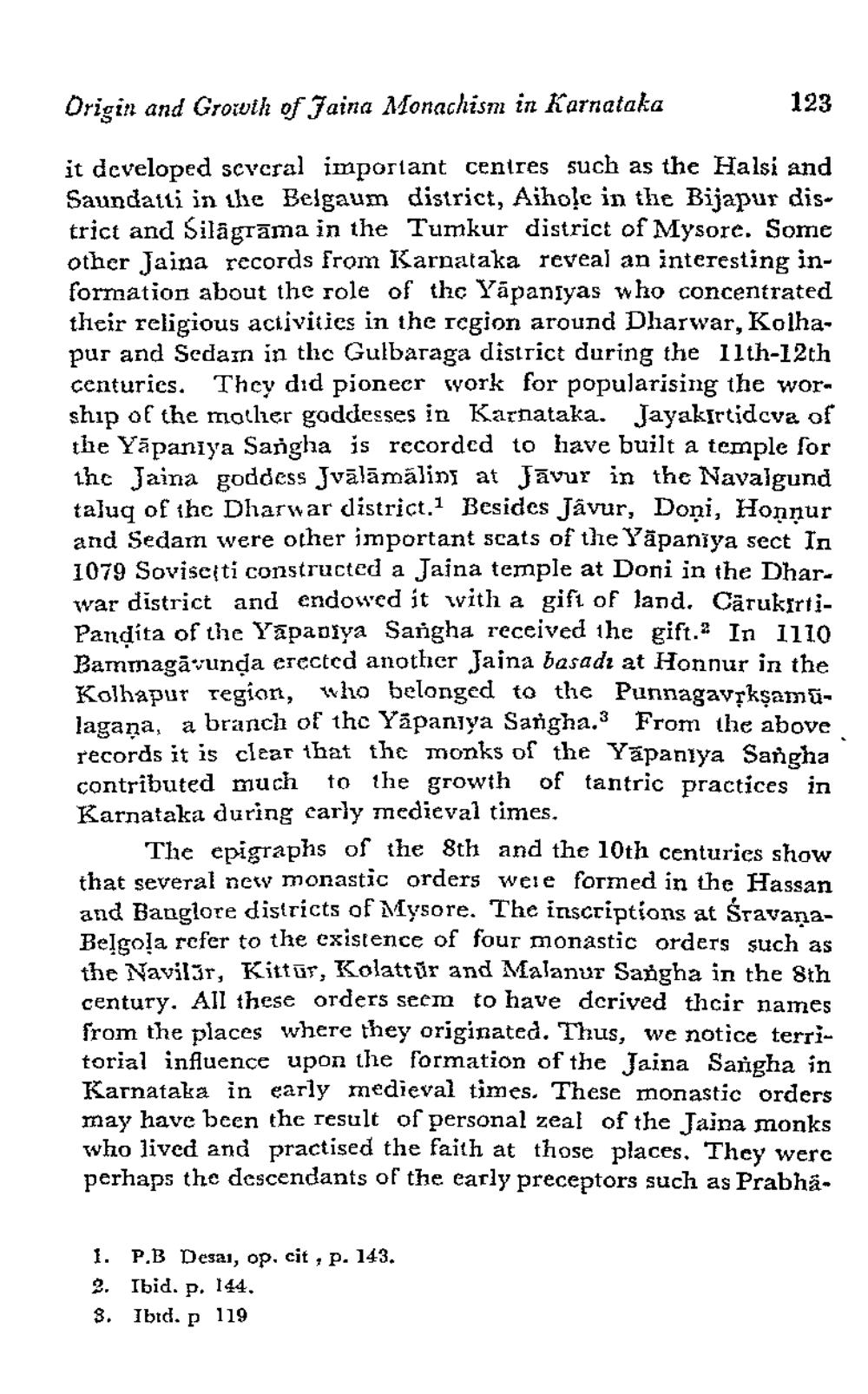________________
Origin and Growvih of Jaina Monachism in Karnataka
123
it developed several important centres such as the Halsi and Saundaiti in the Belgaum district, Aihole in the Bijapur district and Silāgrāma in the Tumkur district of Mysore. Some other Jaina records from Karnataka reveal an interesting information about the role of the Yāpaniyas who concentrated their religious activities in the rcgion around Dharwar, Kolhapur and Sedain in thc Gulbaraga district during the 11th-12th centuries. They did pioneer work for popularising the worship of the mollier goddesses in Karnataka Jayakirtideva of the Yāpaniya Sangha is recorded to have built a temple for the Jaina goddess Jvālāmālinı at Jāvur in the Navalgund taluq of thc Dharwar district.1 Besides Jávur, Doni, Honnur and Sedam were other important scats of the Yāpaniya sect In 1079 Soviseiti constructed a Jajna temple at Doni in the Dhar. war district and endowed it with a gift of land. CarukirtiPandita of the Yapadiya Sangha received the gift.In 1110 Bammagāvunda erected another Jaina basadı at Honnur in the Kolhapur region, who belonged to the Punnagavşkşamülagana. a branch of the Yäpanjya Sangha. From the above records it is clear that the monks of the Yöpaniya Sangha contributed much to the growth of tantric practices in Karnataka during early medieval times.
The epigraphs of the 8th and the 10th centuries show that several new monastic orders were formed in the Hassan and Banglore districts of Mysore. The inscriptions at ŚravanaBelgola rcfer to the existence of four monastic orders such as the Navilúr, Kittur, Kolattür and Malanur Sangha in the 8th century. All these orders seem to have derived their names from the places where they originated. Thus, we notice territorial influence upon the formation of the Jaina Sangha in Karnataka in early medieval times. These monastic orders may have been the result of personal zeal of the Jaina monks who lived and practised the faith at those places. They were perhaps the descendants of the early preceptors such as Prabha.
1. P.B Desai, op. cit, p. 143. 2. Ibid. p. 144. 8. Ibid. p 119




